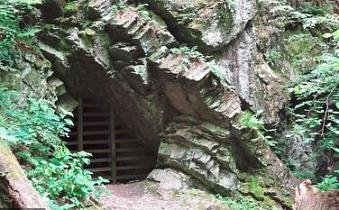Abandoned mines' threat to drinking water remains unknown
SALT LAKE CITY — There are hundreds of thousands of abandoned hard rock mining sites or features scattered throughout the West, and federal and state officials are nowhere close to identifying those that potentially pose a hazard to drinking water.
The Gold King Mine spill in Colorado, which released a torrent of ugly mustard-colored pollutants that contaminated waterways in three states and the Navajo Nation, was a visually graphic reminder from five years ago of how much of a threat and expense these abandoned mines pose.
Hundreds of legal claims were filed against the U.S. Environmental Protection Agency — which had oversight of the mine’s remediation when it breached — with Utah settling its lawsuit just this month with the federal agency over Gold King Mine.
In the agreement, the EPA said it would initiate a preliminary Superfund assessment for a trio of sites in Utah, including two former mining districts in Big Cottonwood and Little Cottonwood canyons, which are home to hundreds of legacy mines scattered on a patchwork of both public and private land.
Their existence in the canyons is an uncomfortable and threatening spectre , since the Wasatch Canyons provide 60% of the Salt Lake Valley’s drinking water, hailed as one of the most pristine resources because it comes from a natural reservoir of snowpack and rushes from treatment to tap in just 24 hours.
But mine debris and waste rock in those canyons have already created impairment problems for aquatic life due to the contaminants of copper and cadmium, the latter of which is a carcinogen. Zinc has also been determined to be a threat to aquatic life in Little Cottonwood Canyon.
Erica Gaddis, director of the Utah Division of Water Quality, said the standard for cold water fisheries is much stricter because the animals exist in the water 24/7. The contaminants, she stressed, are not testing at levels of concern for drinking water standards.
But some people fear it is only a matter of time that the legacy waste from hard rock mining in the canyons will filter into the creeks at such levels that drinking water is compromised beyond the ability for treatment plants to handle, whether it is the water itself or washed down sediment.
“I am concerned this is a problem that has been ignored for too long,†said Salt Lake County Councilman Richard Snelgrove.
“There are a lot of questions and solutions are long overdue. I am pleased that the EPA is looking at this as a potential Superfund cleanup site. It is obvious that not all is well in that canyon.â€
Snelgrove said he is an avid hiker and especially likes to venture into the more remote Cardiff area in Big Cottonwood Canyon.
“On a personal level I cherish these mountains. They are some of our crown jewels, not only for Salt Lake County but the state of Utah.â€
He was up there three years ago and was startled to see abandoned mine waste and rusty colored water trickling over it, eventually winding its way into Big Cottonwood Creek.
“Rusty water comes out of those mine shafts, flows over these tailings that nothing will grow on and then flows into our drinking water for Salt Lake County.â€
The property owner is alleged to be Salt Lake City, which in its watershed plan in 1999 identified metal contamination from legacy mine sites as a problem that merited a remediation plan to be put into place by 2001 — nearly 20 years ago.
That plan is not in place.
“Salt Lake City has some explaining to do on their property. They need to clean up their trash heap,†Snelgrove said.
Laura Briefer, director of the Salt Lake City Division of Public Utilities, said what Snelgrove is seeing is likely waste rock, not tailings. And while the city owns chunks of property in the Cardiff area, Briefer said she could not say if the property Snelgrove is referencing is city-owned without doing a site visit.
“We don’t have tailings in the Wasatch Canyons,†she said, adding there are mine tunnels that may be leaching water, but their risk in Big Cottonwood Canyon has yet to be assessed and drinking water standards are being met.
Yet despite the watershed plan from 1999 dictating a mitigation effort in place for the canyons, Salt Lake City doesn’t appear close to knowing the extent of the problem on the very property it owns.
“I am not aware of Salt Lake City owning property with mine waste in Cardiff or in Little Cottonwood Canyon. We would need to survey the property to understand and confirm property ownership,†Briefer said, even though state mining officials told the agency city- owned property had mine openings in Cardiff.
Briefer said the city still needs to confirm what the state agency informed them.
The EPA announcement that it would initiate Superfund site investigations at legacy mining sites in the canyons came as a surprise to Briefer, she said, but the city welcomes the review.
“I think this is a good outcome to the settlement,†she said. “But often these investigations do not lead to a Superfund assessment. We would be surprised if it did.â€
But Snelgrove said there needs to be greater action to remediate these sites in more remote areas that may pose a risk.
“The mine openings are still open the way they were left 100 years ago. When it comes to health and safety issues, that is not a good excuse,†he said. “The magnitude is enormous and the consequences are enormous, so we can’t have the attitude of, ‘Nothing to see here, just move along.’â€
Mark Allen, founder of Protect and Preserve American Fork Canyon and the executive director of the American Fork Canyon Alliance, agrees with Snelgrove.
“It is kind of a termite problem. If there is a barn burning down, everyone races to put out the fire. But if a termite is eating at the foundation, it is out of sight and out of mind.â€
Allen, frustrated over heavy metals contamination at former mine sites in American Fork Canyon, petitioned the EPA to conduct a site assessment of their risks on the heels of the Tibble Fork Dam release in August of 2016.
Comments
There are 0 comments on this post








